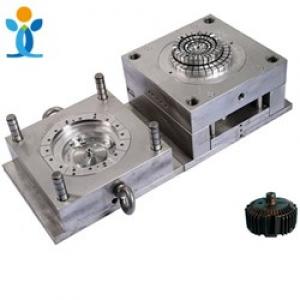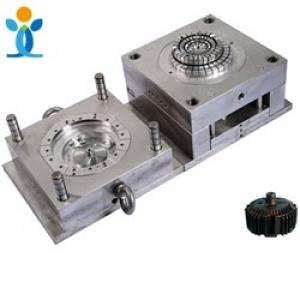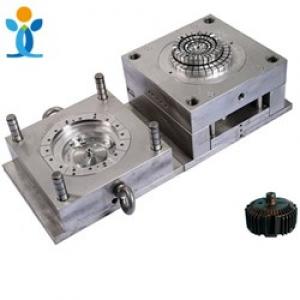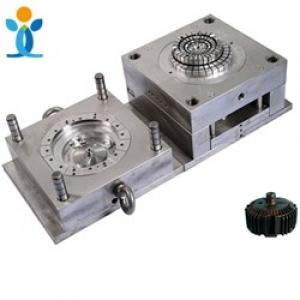principle for plastic injection exhaust system
The more thin-walled products, the more far away from the gate, the opening of exhaust slot is particularly important. In addition, for small parts or precision parts, we should also pay attention to the opening of exhaust slot, because it can not only avoid product surface burns and insufficient injection volume, but also eliminate various defects of products and reduce mold pollution.The function of the exhaust slot mainly has two points: one is to eliminate the air in the mold cavity when injecting molten materials; The second is to eliminate all kinds of gases produced by materials in the heating process.
So, how can the exhaust of the mold cavity be sufficient? Generally speaking, if the melt is injected at the highest injection rate, but no focal spots are left on the product, it can be considered that the exhaust in the mold cavity is sufficient.
picture
1 exhaust mode
principle for plastic injection exhaust system
There are many ways to exhaust the mold cavity, but each method must ensure that: while the exhaust slot exhausts, its size design should prevent materials from overflowing into the slot; Secondly, it is necessary to prevent blockage. Therefore, the height of the exhaust slot with a length of more than 6-12mm shall be about 0.25-0.4mm measured from the surface of the die cavity to the outer edge of the die cavity.
In addition, too many exhaust slots are harmful. Because if the mold locking pressure acting on the part of the mold cavity with no exhaust groove on the parting surface is very large, it is easy to cause cold flow or crack of the mold cavity material, which is very dangerous.
In addition to venting the mold cavity on the parting surface, the purpose of venting can also be achieved by setting an exhaust slot at the end of the material flow of the gating system and leaving a gap around the ejector rod, because the selection of the opening depth, width and position of the exhaust slot will affect the beauty and accuracy of the products if it is inappropriate. Therefore, the size of the above gap is limited to preventing flash around the ejector rod.
Special attention should be paid here: when exhausting parts such as gears, even the smallest flash may not be desirable. It is best to exhaust gear parts in the following ways:
(1) Completely remove the gas in the flow channel;
(2) The matching surface of parting surface is shot peened with silicon carbide abrasive with particle size of 200.
In addition, an exhaust slot is set at the end of the material flow of the gating system, which mainly refers to the exhaust slot at the end of the runner. Its width shall be equal to the width of the splitter, and the height varies depending on the material.
2 design method
For product molds with complex geometry, it is best to determine the opening of exhaust slot after several mold trials. The biggest disadvantage of the overall structure in the mold structure design is poor exhaust.
For the integral cavity and core, there are the following exhaust methods:
(1) Use the groove of the cavity or the installation position of the insert;
(2) Use side insert joints;
(3) Partially made into spiral shape;
(4) Install the strip center with groove and open the process hole in the longitudinal position.
When the exhaust is extremely difficult, the mosaic structure shall be adopted. If it is difficult to open the exhaust slot in the dead corner of some molds, first of all, the molds should be changed to inlay processing without affecting the appearance and accuracy of the products. In this way, it is not only conducive to the processing of the exhaust slot, but also can improve the original processing difficulty and facilitate maintenance.
3 design dimension of exhaust slot
The exhaust of thermosetting materials is more important than that of thermoplastic materials.
First of all, the diverter in front of the gate should be vented. The width of the exhaust slot shall be equal to the width of the shunt channel and the height shall be 0.12mm. All sides of the mold cavity shall be vented, and each exhaust slot shall be 25mm apart, 6.5mm wide and 0.075-0.16mm high, depending on the fluidity of the material. For softer materials, the lower value shall be taken.
The ejector rod shall be enlarged as much as possible, and in most cases, 3-4 planes with a height of 0.05mm shall be ground on the cylindrical surface of the ejector rod, and the wear mark direction shall be along the length direction of the ejector rod. Grinding shall be carried out with grinding wheel with fine particle size. The end face of the ejector rod shall be ground with a chamfer of 0.12mm, so that if flash is formed, it will adhere to the workpiece.
4 Conclusion
Properly setting an exhaust slot can greatly reduce the injection pressure, injection time, pressure holding time and mold locking pressure, and make the molding of plastic parts from difficult to easy, so as to improve the production efficiency, reduce the production cost and reduce the energy consumption of the machine.
In fact, not all of them have to exhaust through the exhaust slot. There are other ways to exhaust:
(1) Exhaust slot exhaust
For molds for forming large and medium-sized plastic parts, there is a large amount of gas to be discharged. Generally, an exhaust slot should be set, which is usually set on the side of the concave die on the parting surface. The position of the exhaust slot should be at the end of melt flow, and the size of the exhaust slot should be based on the principle that the gas can be discharged smoothly without overflow. The width of the exhaust slot is generally about 3-5mm, the depth is less than 0.05mm, and the length is generally 0.7-1.0mm.
(2) Parting surface exhaust
For small molds, the parting surface gap can be used for exhaust, but the parting surface must be located at the end of melt flow.
(3) Insert gap exhaust
For the combined die or cavity, the combined gap can be used for exhaust.
(4) Push rod clearance exhaust
Exhaust with the fit gap between the push rod and the template or core, or deliberately increase the gap between the push rod and the template.
(5) Powder unburned bonded nugget exhaust
Powder unsintered alloy is a material sintered from spherical particle alloy. It has poor strength but loose texture, allowing gas to pass through. A piece of such alloy can be placed at the part to be vented to meet the requirements of venting, but the diameter of the vent hole at the bottom should not be too large to prevent it from being extruded and deformed by the cavity pressure.
(6) Exhaust well
A cavity is arranged on the outside of the plastic melt confluence to discharge the gas into it, and a good exhaust effect can also be obtained.
(7) Forced exhaust
The exhaust rod shall be set at the part where the gas is closed. This method has good exhaust effect, but the rod trace will be left on the plastic parts. Therefore, the exhaust rod shall be set at the concealed place of the plastic parts.




